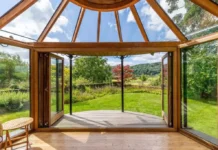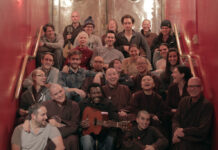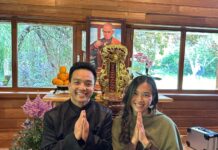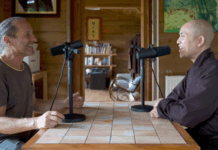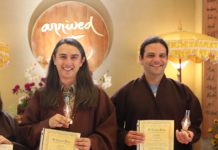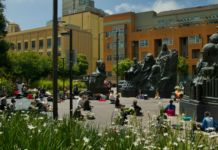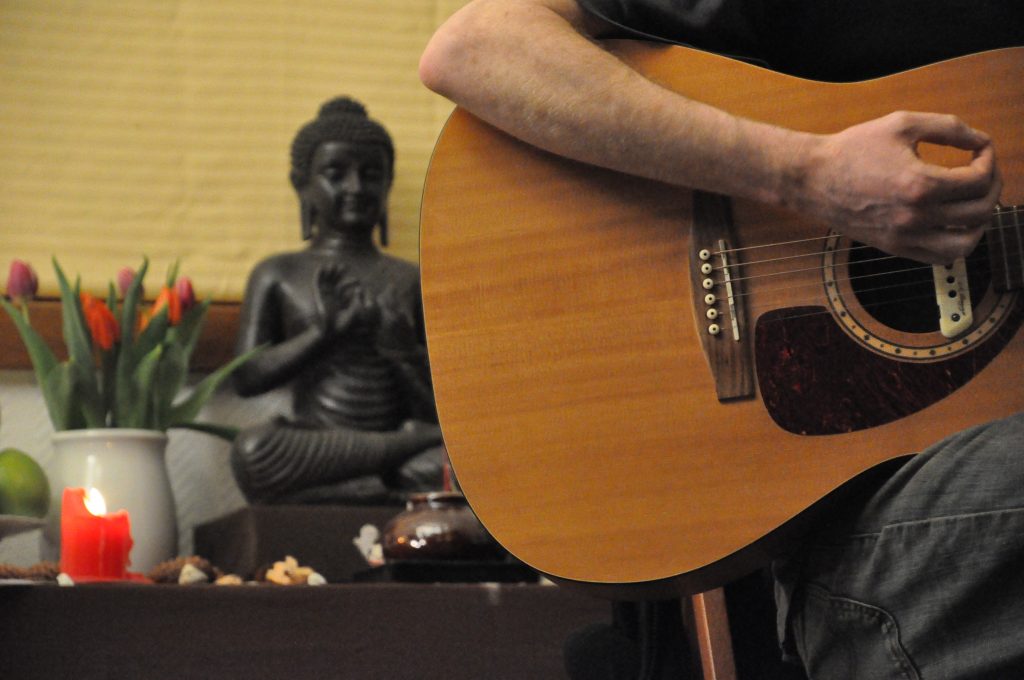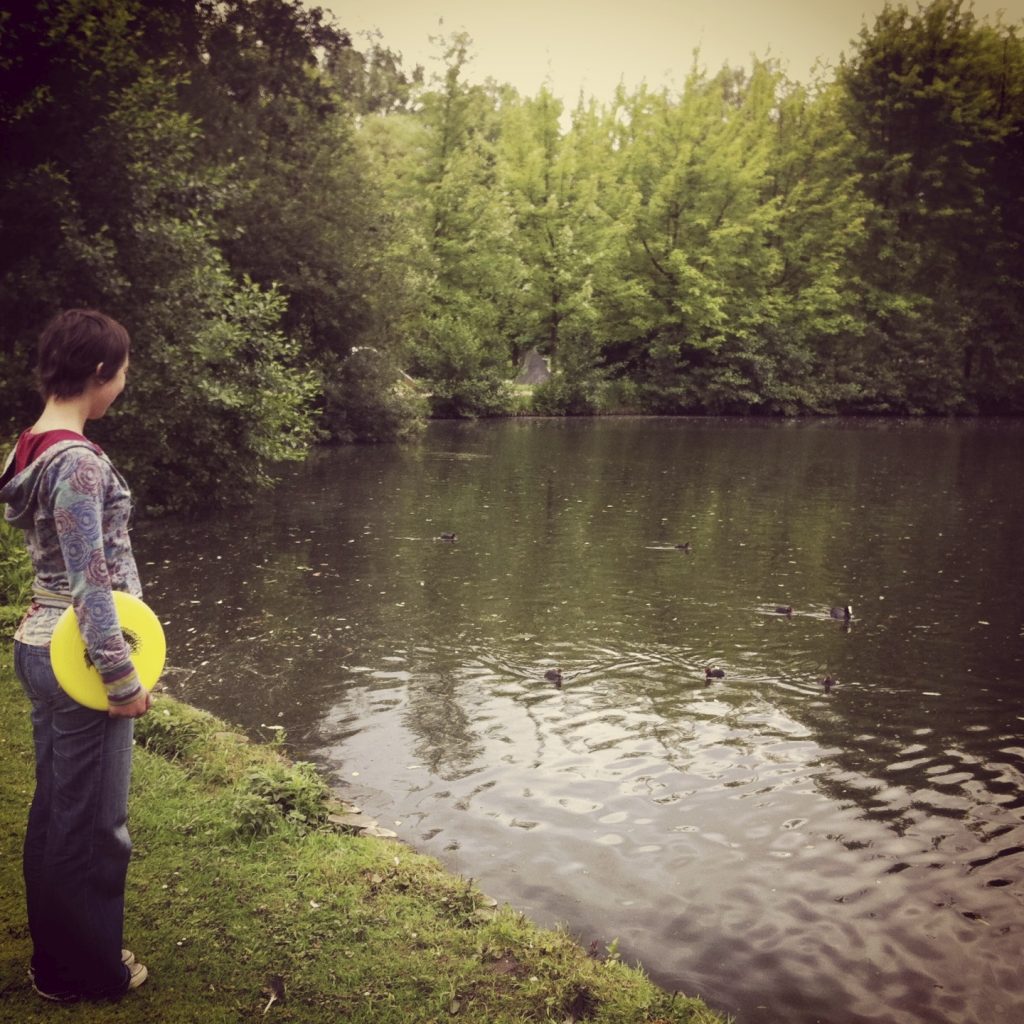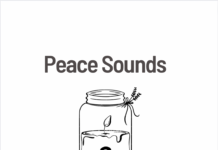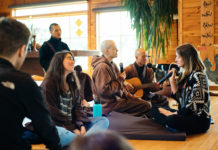By Leni Cellini
A retreat with ‘music’ as its theme: I didn’t want to miss it for the world. It combined my two great passions: mindfulness and music. A whole week of singing, dancing, and making music together while also practicing meditation and silence: seemed like the perfect recipe for a wonderful holiday to me! I had to change work appointments and struggle with deadlines for it, but it was totally worth the effort. It turned out to be the most joyful retreat I ever went to. Its sparkling, healing energy is now – still alive in me.
Savouring silence
On Wednesday the 30th of March, around 30 young adults came together at the EIAB, a Buddhist monastery in the tradition of Thich Nhat Hanh. Me and my traveling companion arrived a bit early. While waiting in the entrance hall, I could hear someone playing the guitar. I spontaneously followed the sound, which led me to a group of monks and nuns singing together. I was invited to sit down and before I knew it, I was offered a cup of tea and had piece of cake in my hand. Such a warm welcome! I immediately felt at home 🙂
On the second day, it became clear that the retreat wouldn’t just be about music, but also about silence. Because how can you really enjoy music if you haven’t savoured silence first? How can you listen to each other when your inner monologue keeps rattling? And how can you wholeheartedly make music if you don’t first let go of all nuisance, of the never-ending noise inside of you? In short: we would create silence in and around us, and create music from this silence. This was our intention, and it led to several joyful musical moments and improvisations.
In the inspiring dharma talks, the importance of silence was also emphasized. Silence as the basis for all creativity. Silence out of which music can emerge. From which all creativity is born. A moment of rest and space that allows us to fully relax. When we touch silence in our head and heart, we can hear what our inner voice really wants to tell us. So the question is: how can we silence our mind? How can we calm down the mental chatter in our head, even if only for a minute?
Well, it requires practice. And patience. And perseverance. Doing nothing for a while, without interfering, allowing yourself to put your life on ‘pause’. The difficult thing is that this is the exact opposite of our tendency to be productive all the time. For instance, we often think that meditation is a waste of time. To sit still and become aware of your breath seems totally useless. There’s so much we have to do: study, work, shop, cook, clean, … not to mention our children or hobbies. Our diaries are more than full (yep, mine too!). Even if we have a day without any plans scheduled, there are many things on our to do list we have to finish.
Doing nothing, if only for ten minutes, is not an option, although we might long for it. Can we allow ourselves to do absolutely nothing? Nothing productive, nothing important, nothing special? Let’s try it. Sit comfortably and bring your attention to your belly that goes up and down while you breathe. That’s all. If thoughts and feelings arise, just let them pass. Observe the circus that goes on in your mind with some curiosity. As if you’re sitting on the bank of a river, looking at all things that come by: branches, leaves, fish, ducks, maybe an old rusty bike. Very interesting. It may be a bit uneasy at first, but soon you’ll recognize the branches and leaves when they pass by. This short video shows us how meditation works in a very clear and fun way. It manages to explain something that is very hard to explain.
The gardener and the poet
Of course, this argument for silence doesn’t mean we all have to stop being productive and we should only sit still and breathe. We shouldn’t stop undertaking things and all go meditating in a cave in order to attain inner peace. On the contrary: it is wonderful to create things. A poem, a painting, a song. A drawing, a blogpost, a meal. Whatever comes up when your heart is silent.
Thich Nhat Hanh, my favourite zen monk, in fact leads a very active life. He seems to have an incredible drive: he writes several books and poems each year, gives retreats and talks all over the world and makes wondrous calligraphies. Few people of his age are as productive as he is. Recently, he was shadowed by a journalist who wanted to write an article about him. They spent a lot of time together. One day, she watched him working in the garden. He was watering the plants with the utmost care and attention. The journalist was surprised and asked him: “Thây, you’re such a great author and poet. Why do you spend your precious time gardening, when you can also use it to create poetry?” Thây answered that he writes beautiful poems because he works in the garden. Taking care for the plants in the garden, doing simple, basic things allows him to find inspiration for his poetry. So, working in the garden contributes to writing the poems. It isn’t a waste of time. One thing is not more valuable than the other.
I was very moved when I heard this story during the music retreat. I also recognize the habit in me to divide activities into meaningful or useless, important or secondary. The anecdote about the importance of gardening shows me that everything we do can be art. If we do it with our full attention, our full being, then every action is meaningful, sacred. Why would cleaning or doing the dishes be less important than painting or writing songs? Why would we consider certain moments of the day as insignificant or trivial? Can we look deeply into our daily life and see the fullness and completeness in every moment? Can we savour the silence in the sounds and the music in the silence? Can we listen to our own song and open up to the unique songs of others? And can we take time once in a while to touch the silence in our heart? I really want to try. Are you with me?
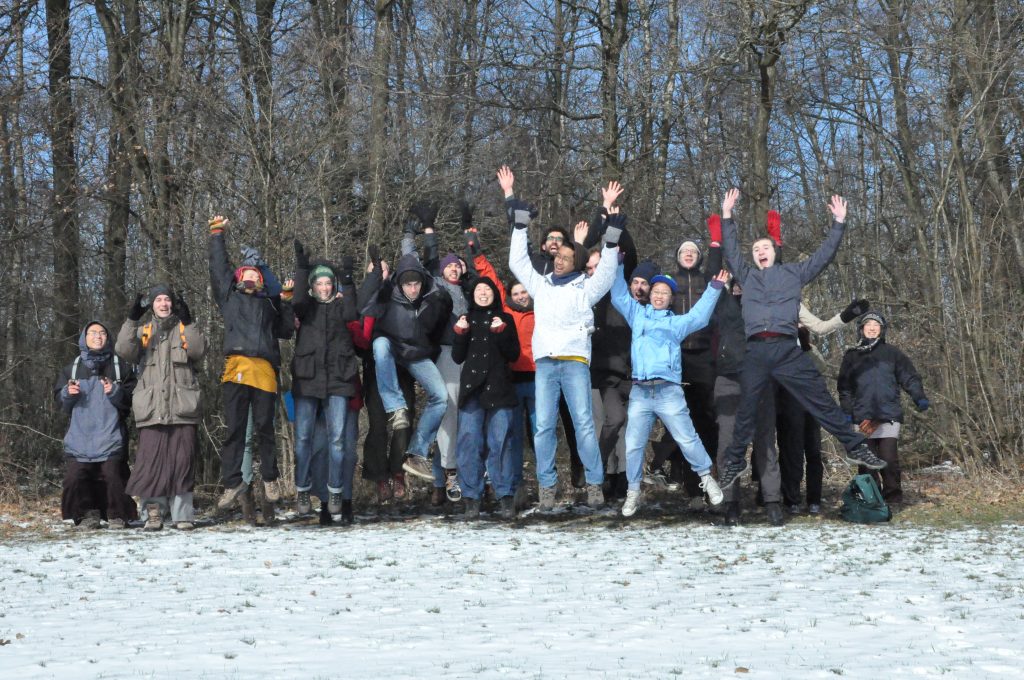
Leni is a Wake Upper from Belgium who is very passionate about music. She fell in love with the practice about five years ago and has been practicing with the sangha ever since. Her dharma name is Loving Equanimity of the Heart.
This post originally appeared in Dutch on Leni’s website.


